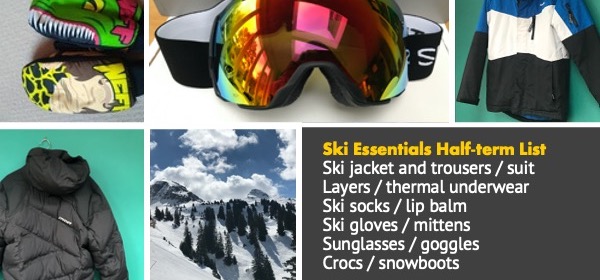The importance of climate change to the younger generation is among the reasons why school ski trip operator Halsbury Ski is now working with WhoSki.com to manage and reduce the carbon footprint of its activities.
When your young clients are among the most enthusiastic supporters of the sustainability movement – and those most vulnerable to the effects of climate change – acting on their concerns makes good business sense. Call it the Greta Thunberg effect.
“Working together is a sustainability gain”
Halsbury’s Managing Director Hugues Raulet says: “Working with WhoSki.com is an instant sustainability gain. Encouraging our clients to purchase and dispose responsibly of the clothing they need for an enjoyable trip to the slopes with Halsbury is an important step on the way to reducing the carbon footprint of our activities.”
WhoSki.com Co-Founder Nicola Davenport explains: “Halsbury approached us with a view to working together. Lockdown delayed active collaboration, but we are so pleased that Halsbury will be recommending WhoSki.com as a source of good-as-new clothing for parents when they sign up their children for a Halsbury ski trip.
“By buying and selling through WhoSki.com, you are helping keep hard-to-recycle wintersports clothing in circulation and out of landfill.”
Halsbury: thinking green
Halsbury has sustainability strongly on its radar. It has installed solar panels and electric vehicle charging points at its offices. Electric bikes are provided for staff who want to use them to get to work.
MD Hugues Raulet is an eco-pioneer whose ventures outside Halsbury have included establishing a B Corp-certified recycling business in Argentina, researching and raising awareness about alternative sustainable fuels. He has ambitions for Halsbury to continually reduce its carbon footprint.
Hugues explains: “Our partnership with WhoSki.com is a proactive way to progress our sustainability journey. This is a positive step towards a greener business. We are doing the things that we can with a vision and an ambition to extend and expand our sustainability agenda.”
Student ski clothing: perfect for re-sale
Halsbury will include information about WhoSki.com to parents and students via the schools packs it provides for clients.
Children’s ski clothing is among the best sellers at the WhoSki.com online marketplace – remember – we donate 10% of our commission on every sale to the teen mental health charity stem4.




